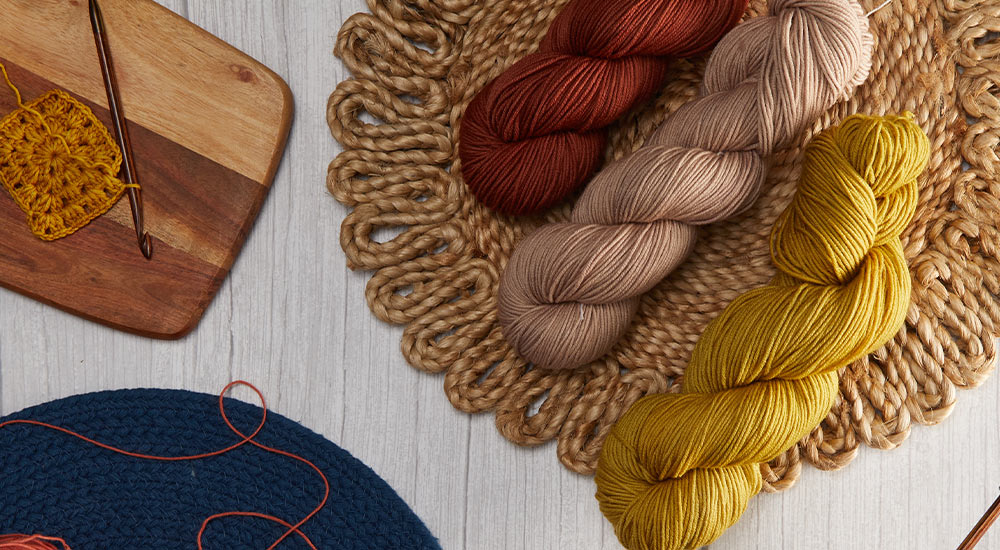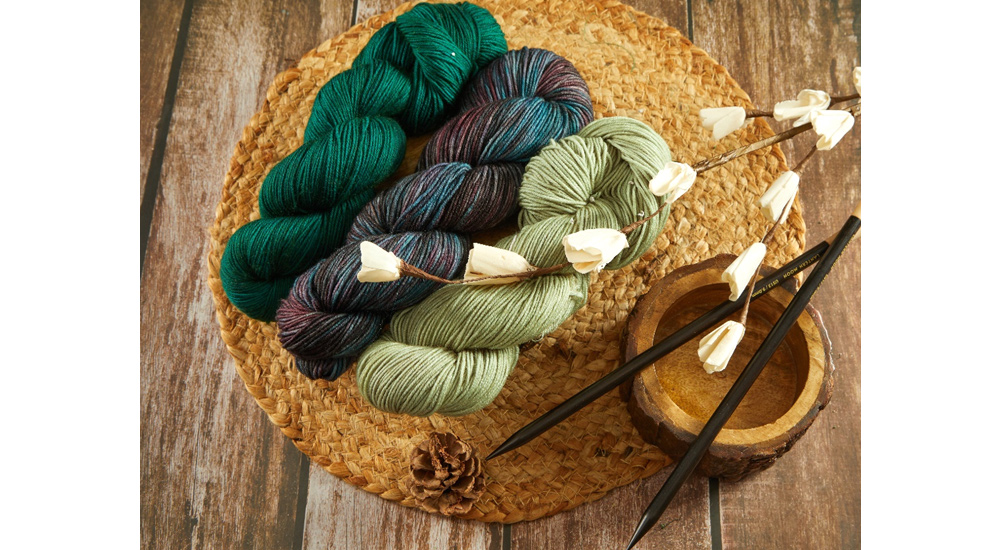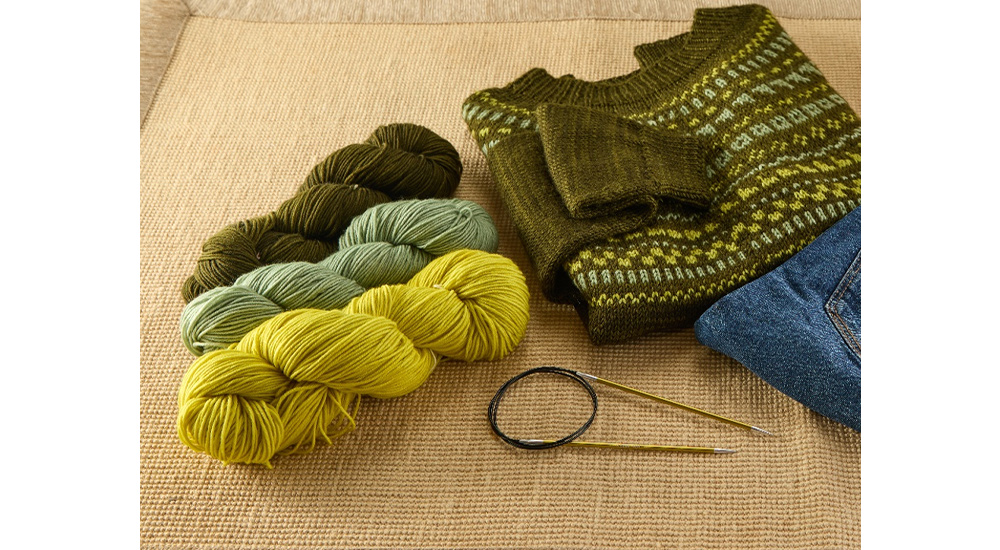Yarn Weight Calculator: How Much Yarn Do You Need for Knitting & Crochet Projects?
- Blog Views : 2461
- Symfonie Yarns
- 24Jul, 2025

Whether you're knitting a cozy sweater, crocheting a delicate shawl, or making your first pair of socks, the first question that comes to the mind is: “How much yarn do I need?” This is especially important when working with hand-dyed yarn, where dye lots are often limited, and exact shade matches can be hard to find later. The answer lies in understanding yarn weights, stitch patterns, and project types. As knitters or crocheters, the question is often asked when you are dealing with stash leftover from previous projects. To help you decide, we’ll explore how to estimate your yarn requirements using a yarn weight guide, a handy yarn weight table, and a couple of tried-and-tested methods for planning your yarn usage.
In this blog, we’ll cover
- Understanding Yarn Weights
- Knitting vs. Crochet: Which Uses More Yarn?
- The Role of Stitch Patterns
- Yarn Weight Table: A Handy Reference
- Methods to Estimate How Much Yarn You Need
Understanding Yarn Weights
Yarn weight refers to the thickness of the yarn strand. It directly impacts your project's drape, stitch definition, and most importantly how much yarn you'll need. Why? Well, for example the yarn weight impacts the stitch size.
Also read - The Ultimate Guide to Yarn Weights: Fingering, DK (Double Knit) vs Worsted
1. Fingering Weight Yarn - Ideal for socks, lace shawls, and lightweight garments. Most fingering weight skeins are designed to contain enough yarn for one adult pair of socks. You can also plan mittens or gloves. It is also preferred for detailed lacework.
2. DK (Double Knitting) Weight Yarn – A versatile option for baby clothes, lighter sweaters, and accessories, DK yarn is ideal for all. Many times, two DK yarn skeins can be totally different owing to the yarn fiber. For example, extrafine merino wool is different from merino-silk yarn blend.
3. Worsted Weight Yarn – Leaning towards heavy yarns, worsted weight is a go-to for warm sweaters, scarves, and blankets. It is ideal for quick to knit or crochet with, especially great for beginners. It requires fewer stitches per inch, so projects grow faster.

Knitting vs. Crochet: Which Uses More Yarn?
Crochet generally uses more yarn than knitting for the same size project. This is due to the nature of crochet stitches, which are thicker and use more loops. However, knitting yarn and crochet yarn is generally the same but the yardage needed for a project depends on the stitch pattern and project size.
Also read - Knitting or Crochet: Which Crafting Style Uses More Yarn
The Role of Stitch Patterns
Some stitch patterns consume more yarn than others. For example:
- Lace and mesh patterns use less yarn due to their open structure.
- Cables, bobbles, and textured stitches use significantly more yarn.
- Tunisian crochet, which combines elements of knitting and crochet, also tends to require more yarn.
Always consider the stitch type when calculating your yarn needs.
Yarn Weight Table: A Handy Reference
Planning your next knitting or crochet project? Use this handy yarn weight chart to estimate how much yarn you’ll need based on project type and yarn weight. Remember—yardage varies depending on size, stitch pattern, and technique, but this gives you a solid starting point!
Project Type |
Fingering Weight (approx. 400–450 yds per 100g) |
DK Weight (approx. 240–300 yds per 100g) |
Worsted Weight (approx. 180–220 yds per 100g) |
|
Pair of Socks |
350–450 yds |
Not typically used |
Not typically used |
|
Hat |
250–300 yds |
150–180 yds |
120–150 yds |
|
Scarf / Cowl |
400–600 yds |
300–450 yds |
250–400 yds |
|
Baby Sweater |
500–650 yds |
350–500 yds |
300–450 yds |
|
Adult Sweater (M) |
1200–1800 yds |
1000–1500 yds |
900–1400 yds |
|
Blanket (Throw) |
2000–3000 yds |
1800–2500 yds |
1500–2200 yds |
|
Shawl / Wrap |
400–800 yds |
350–700 yds |
300–600 yds |
|
Mittens / Gloves |
250–350 yds |
200–300 yds |
180–250 yds |
Notes:
- Always check your pattern for exact yardage recommendations.
- Yardage may vary depending on tension, stitch complexity, and personal style.
- Swatching is always recommended for accurate estimates!

Methods to Estimate How Much Yarn You Need
Even with guides and tables, estimating yarn usage for custom projects can be tricky. Here are two reliable techniques to help you:
1. Knit or Crochet a Gauge Swatch
Make a 10x10 cm (4x4 inch) swatch in the exact stitch pattern you'll use. Measure how many stitches and rows you get per inch, and calculate how many you'll need for the entire project. Weigh your swatch and use this proportion to estimate total yardage.
Pro Tip: Swatching is especially important when using hand-dyed yarns, since gauge can slightly vary between skeins.
2. Wraps Per Inch (WPI)
Wrap your yarn around a ruler for one inch and count how many wraps fit snugly side by side:
- 14–30 WPI = Fingering weight
- 11–15 WPI = DK weight
- 9–12 WPI = Worsted weight
Once you know the yarn weight, refer to our yarn weight guide to estimate the yardage for your project.
Every project is unique, and so is every skein of yarn especially when you’re working with beautiful hand-dyed yarn. By using a yarn weight guide, understanding the role of stitch patterns, and applying accurate estimation methods, you can avoid mid-project surprises and ensure you have just the right amount of yarn on hand.
Planning ahead means more time for creating and less time stressing. So next time you wonder “How much yarn do I need?”, come back to this guide. For premium Hand-Dyed Yarn, browse our yarn collection of fingering, DK, and worsted weight hand-dyed skeins designed to bring your projects to life with vibrant, rich colorways. With OEKO Tex 100 certification, every yarn skein is tested against 350+ harmful substances making it perfect safe to use against the skin, especially favored for baby garments and sensitive skin.
Before you head out to buy yarn, refer to these guides:
Guide to Choose the Best Yarn Weights for Different Knitting Techniques
-
- 08 Dec,2025
-
- 02 Dec,2025
-
- 27 Nov,2025
-
- 24 Nov,2025
-
- 19 Nov,2025
-
- 17 Nov,2025
Copyright © Symfonie Yarns 2025 - all rights reserved | RSS Feed
